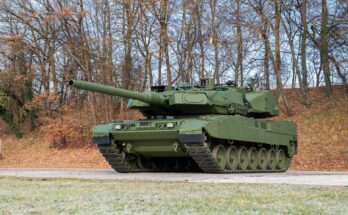Thailand’s government has given its stamp of approval to a defense budget proposal for 2020 that will see topline spending rise to THB233.35 billion ($7.6 billion). The draft figure marks a 2.7 percent increase over the allocation for 2019, which amounts to THB227.12 billion ($7.4 billion).
Under the 2020 proposal, the defense earmark will amount to roughly 7 percent of total government spending and equal around 1.4 percent of national GDP. This year defense spending comes to around 6.2 percent of national expenditure and 1.3 percent of GDP.
Under the outlines of the budget draft, the bulk of investment is earmarked for the Royal Thai Army at 49 percent, or THB113.67 billion ($3.7 billion). This is unsurprising, as the RTA has traditionally dominated the distribution ratio for the three main service branches of the military. The RTA continues to conduct a standing military operation in the three southernmost provinces of the country against the insurgents from within the Malay Muslim population. The insurgency erupted in January 2004, and since then successive Thai governments have militarized the situation, with nearly 60,000 troops currently deployed to the region.
In recent years, the ruling military junta, led by retired general and current Prime Minister Prayuth Chan-ocha, has sought to bring the defense budget up to 2 percent of GDP over the near term. But this appears likely to prove a case of wishful thinking. Instead, annual defense outlays remain roughly on a parallel track with economic expansion or recession, much as it has for two decades.
The main thrust of Thai defense investment beyond personnel and operational costs is the nation’s latest military modernization effort, titled “Modernization Plan: Vision 2026.” This plan seeks to upgrade each capability domain (air, land and sea) while assisting local defense industry through offset requirements and technology transfer within foreign-sourced procurements. The Vision 2026 plan thereby complements the Master Plan for the Defense Industry (2015-2020) in a multi-pronged effort to advance the indigenous military-technological industrial base by utilizing procurement funding as a bargaining chip with foreign vendors as a means of supporting industrial development.
How effective this initiative will be remains to be seen, as Thailand allocates roughly 15 percent of annual defense expenditure toward military procurement.

Dan Darling is Forecast International’s director of military and defense markets. In this role, Dan oversees a team of analysts tasked with covering everything from budgeting to weapons systems to defense electronics and military aerospace. Additionally, for over 17 years Dan has, at various times, authored the International Military Markets reports for Europe, Eurasia, the Middle East and the Asia-Pacific region.
Dan's work has been cited in Defense News, Real Clear Defense, Asian Military Review, Al Jazeera, and Financial Express, among others, and he has also contributed commentary to The Diplomat, The National Interest and World Politics Review. He has been quoted in Arabian Business, the Financial Times, Flight International, The New York Times, Bloomberg and National Defense Magazine.
In addition, Dan has made guest appearances on the online radio show Midrats and on The Media Line, as well as The Red Line Podcast, plus media appearances on France 24 and World Is One News (WION).




